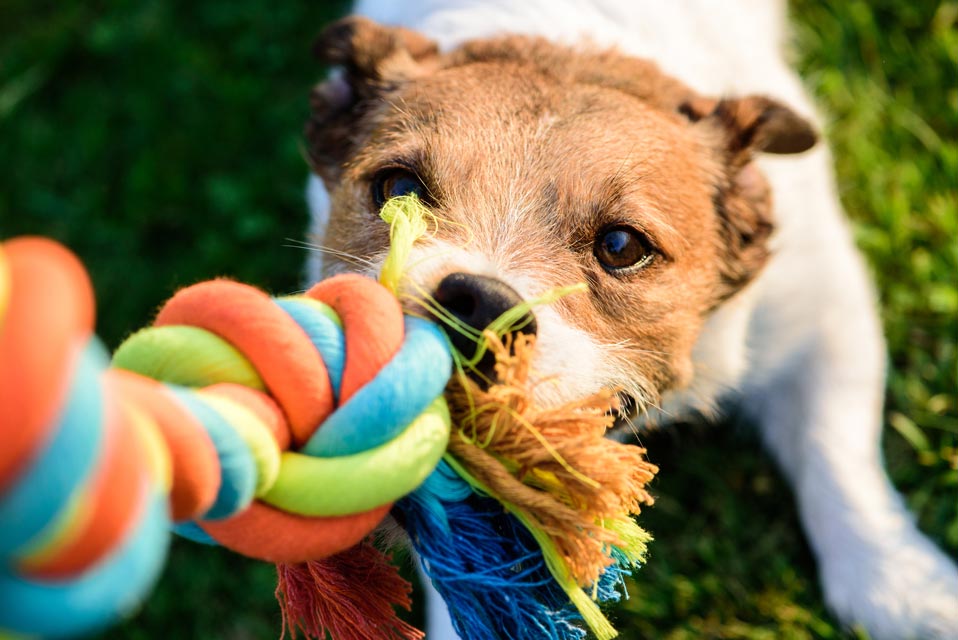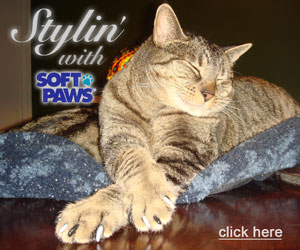- Home
- Should Dogs Play Tug-of-War?

Should Dogs Play Tug-of-War?

Debate exists over whether tug-of-war is a good game for humans to engage in with dogs. Most dogs love it, but can it lead to injury or even the development of aggression toward people?
Safety Concerns About Tug-of-War
Most dogs can play tug-of-war without a problem. However, some situations can cause the game to be a danger to your dog. These include:
- Your dog has already shown dominance-related aggression toward people. These dogs should never play tug-of-war with people because it can trigger those already present issues and worsen them. In this situation, playing the game could even put the person at risk of a bite. If your dog has shown aggression toward you or another person, consult with your veterinarian or a behavioral specialist about what to do.
- Your dog has dental problems. If your dog has loose or painful teeth or gums, tug-of-war isn't a good idea. Additionally, people should always take care not to tug too hard on their dog's teeth because it can cause injury.
 Your dog is a puppy. Tug-of-war should be avoided with puppies because their teeth, mouths, and jaws, are still growing and changing. Tugging too much can cause jaw or bite problems.
Your dog is a puppy. Tug-of-war should be avoided with puppies because their teeth, mouths, and jaws, are still growing and changing. Tugging too much can cause jaw or bite problems.- Your dog has arthritis or is prone to disc problems. A dog that is known to have arthritis should probably not play tug-of-war because it can exacerbate the condition and cause pain. Also, dogs with previous intervertebral disc problems or members of those breeds prone to it, like dachshunds, may be at high risk of injury from tugging games.
Tug-of-War Is OK for Most Dogs
With the above considerations excluded, tug-of-war is a great game for most dogs. There's no evidence that it causes aggression problems in dogs not already displaying them. It can be great exercise, is a wonderful bonding time for a dog and human, and can decrease negative behaviors because it allows a physical and mental outlet for excessive energy.
Tug-of-war can be used to help a puppy learn to play with toys rather than mouth or nip at people's hands. Simply keep a toy nearby, and every time the pup mouths you, hand him the toy and get him interested in playing tug instead. This is a great way to use positive reinforcement to train your dog because he will learn that bringing you a toy results in much greater rewards for him than grabbing your skin with his mouth does.
Tug-of-war can help a timid dog learn confidence. You might have to entice him to begin playing, but once he does, he'll gain experience and have success that can counteract any shy tendencies.
Rules for Tug-of-War with Dogs
Here are some rules you should use when playing tug-of-war with your dog:
- Always tug from side to side, not up and down. The up and down movement can cause injury to your dog's neck.
- Don't overdo it. Take your dog's size and medical condition into account when playing tug-of-war. Be gentle.
- Use a toy that is long enough, so your hands don't get accidentally nipped when your dog needs to get a better grip. Rope toys are often used for tug-of-war and can be great if they're made of soft material.
- Choose a toy that's comfortable for both you and your dog to hold. A toy with a nice handle can be helpful for you, and soft, flexible material works best for dogs and humans.
- You should be the one to start and stop all tug-of-war games. Your dog should not be encouraged to jump on you or grab your clothes or hands to start a game of tug-of-war. Train him to sit calmly and wait for you to start the game. Additionally, teach him that the game is over when you put the toy away, and he shouldn't jump on or mouth at you to try and get it started again.
- Kids shouldn't play tug-of-war with dogs. Because children aren't as able to read a dog's body language cues and because they are smaller, they could be injured during tug games with dogs and shouldn't be allowed to play that game.
- Your dog must drop the toy when you tell him to. Teach your dog the "drop it" command and use it periodically during tug-of-war games to reiterate that he must stop when you tell him.
- Stop the game if you feel your dog's teeth. Even if it's an accident, withdraw from the game for a few moments if you feel your dog's teeth. This will reinforce that it's not allowed for him to nip or tug at humans' bodies.
- If you think your dog is being aggressive, drop the toy and walk away. Signs of aggression include staring intently at your face, pulling the lips back from the teeth, raising the hair over the spine, stiff and still body or facial muscles, growling, and a high tail. If you see anything that makes you think the dog might bite, drop the toy and remove yourself from the game.
Dogs can play tug-of-war with each other, and the same rules should apply. If your dogs show any truly aggressive dominant behavior while playing, they shouldn't be allowed to engage in the game together.
Your dog might even like to play tug-of-war alone: Tether Tug Dog Toy.

 Loading... Please wait...
Loading... Please wait...






